Results
-
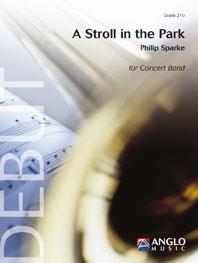 £87.99
£87.99A Stroll in the Park (Concert Band - Score and Parts) - Sparke, Philip
A Stroll in the Park is a piece in the tradition of walking music (such as the Promenade from Mussorgsky's Pictures at an Exhibition or Gershwin's Walking the Dog from Shall We Dance). It strives to describe the joyful benefits of a relaxing walk in a city park on a summer Sunday afternoon and should be played in a relaxed, carefree and laidback manner.Duration: 4:15
Estimated dispatch 7-14 working days
-
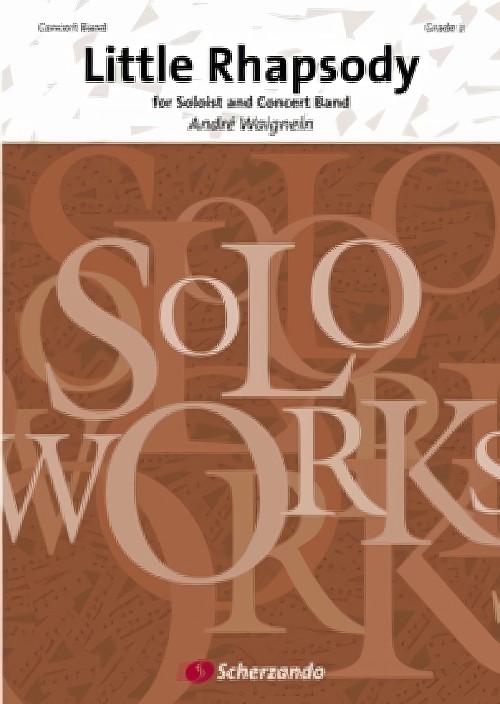 £104.99
£104.99Little Rhapsody (Trumpet Solo with Concert Band - Score and Parts) - Waignein, Andre
Little Rhapsody is a contrasting triptych for solo trumpet and concert band. The warm and gentle introduction develops a lively theme and the accompaniment is kept light to best underline the soloist's flexibility and technique. The second movement is more romantic and reveals a serene and flowing melody. The third and last movement elaborates upon several joyful rhythmic patterns which give the composition a touch of freshness and elegance. Let your trumpet soloist shine with this first-class item.Duration: 7:45
Estimated dispatch 7-14 working days
-
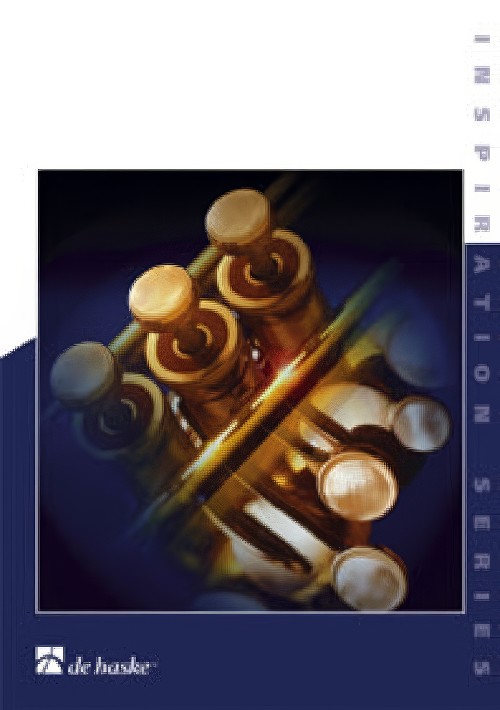 £159.99
£159.99Alpine Flowers' Party! (Concert Band - Score and Parts) - Sakai, Itaru
The Hida High School is in a highland city called Takayama in Gifu Prefecture. Takayama City has some of the highest mountains in Japan, atmospheric rows of houses and streets, and a beautiful landscape. The magnificent views from these mountains can be described as a paradise above the clouds. When the composer visited there in the summer of 2001, the lovely flowers spreading through the valley and the refreshing air welcomed him. The flowers looked as if they were fashionably dressed and fully enjoying conversation and a short summer at a reunion party. The composer was inspired by this scenery to compose this piece. The musical party opens with happy greetings of a reunion and joyful themes follow one after another. A light xylophone solo, a waltz and an adagio featuring alternate solos by alto saxophone, euphonium and trumpet lead to a brilliant finale featuring brass and percussion played in irregular time. A beautiful musical picture that your band will enjoy performing for many years.Duration: 10:45
Estimated dispatch 7-14 working days
-
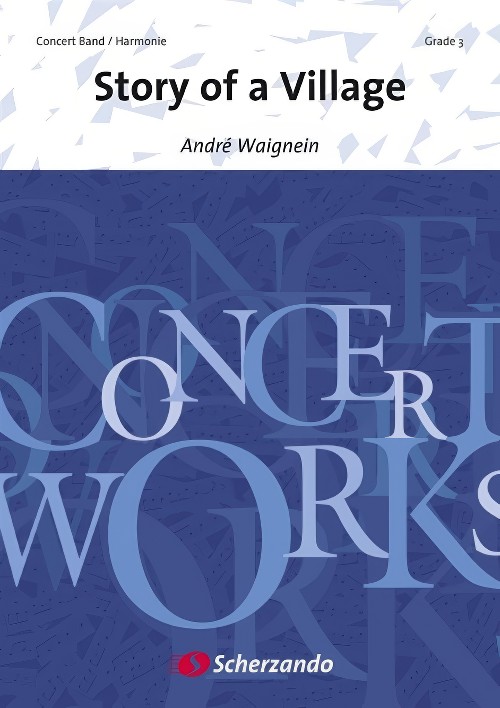 £139.99
£139.99Story of a Village (Concert Band - Score and Parts) - Waignein, Andre
This work relates the story of Maasbracht, a town on the banks of the Meuse River in the Dutch province of Limburg. Like all fairy tales, the story begins serenely with ?Once upon a time?? The music evokes the atmosphere of this very pleasant region, where the gentle way of life is the key to happiness. A lively and joyful passage depicts the cheerfulness of the people of Maasbracht. Maasbracht, like many other towns, suffered during World War II: sound colours darken and pictures of destruction run through our mind. In the midst of despair there is hope, from grief comes new life. The future looks promising. The work leaves Maasbracht, looking forward to the 21st century with confidence. A highly descriptive work that is suitable for any concert or contest situation.Duration: 10:00
Estimated dispatch 7-14 working days
-
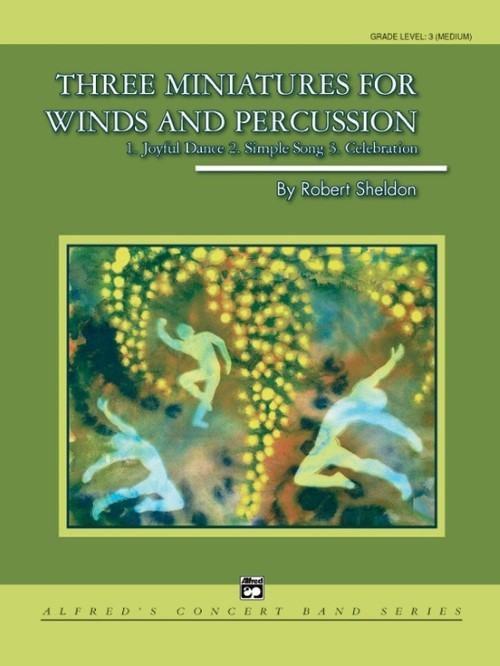 £73.50
£73.50Three Miniatures for Winds and Percussion (Concert Band - Score and Parts) - Sheldon, Robert
Dance like no one is watching, sing like no one is listening and live each day as if it were your last. This famous poem has many versions and is attributed to several authors, yet its simple, eloquent message speaks volumes to millions of people worldwide. The composition therefore has a first movement entitled Joyful Dance, the second movement is Simple Song, and the final movement is a Celebration. Each movement is quite brief but distinctly different, each expressing the feelings inherent in the poem from which the work was drawn. Duration: 5.00
Estimated dispatch 7-14 working days
-
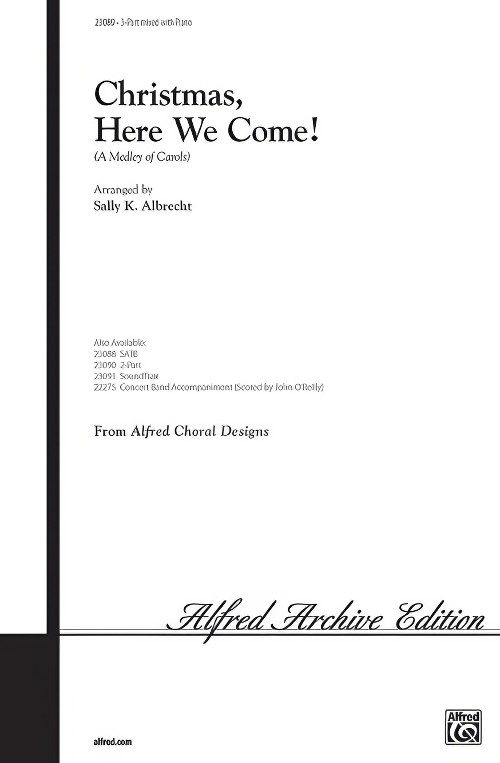 £2.25
£2.25Christmas, Here We Come! (3-Part Mixed Choral Octavo) - Albrecht, Sally K.
There's no better way to open or close your holiday concert than with this rousing arrangement of carols by Alfred composer Sally K. Albrecht! "Here We Come A-Caroling," "Over the River and Through the Wood," "I Saw Three Ships," and many other Christmas favorites are set in a festive 6/8 meter to create this joyful feature for any age choir. And you can team up with your school band on the sensational and playable arrangement by John O'Reilly.
Estimated dispatch 7-14 working days
-
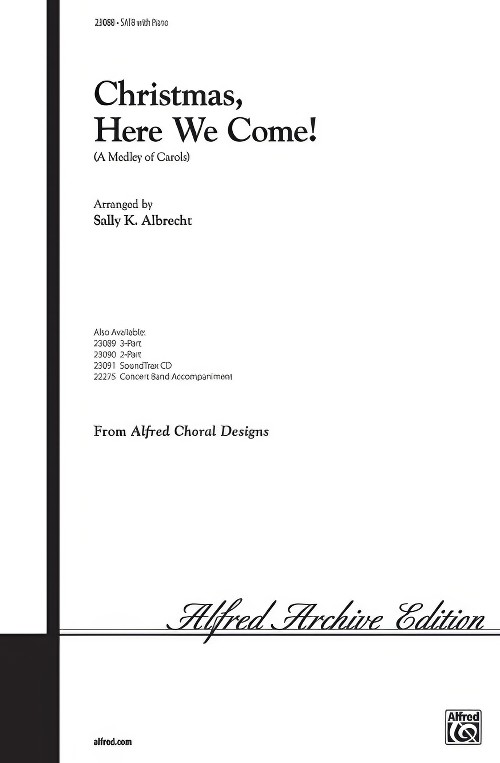 £2.25
£2.25Christmas, Here We Come! (SATB Choral Octavo) - Albrecht, Sally K.
There's no better way to open or close your holiday concert than with this rousing arrangement of carols by Alfred composer Sally K. Albrecht! "Here We Come A-Caroling," "Over the River and Through the Wood," "I Saw Three Ships," and many other Christmas favorites are set in a festive 6/8 meter to create this joyful feature for any age choir. And you can team up with your school band on the sensational and playable arrangement by John O'Reilly.
Estimated dispatch 7-14 working days
-
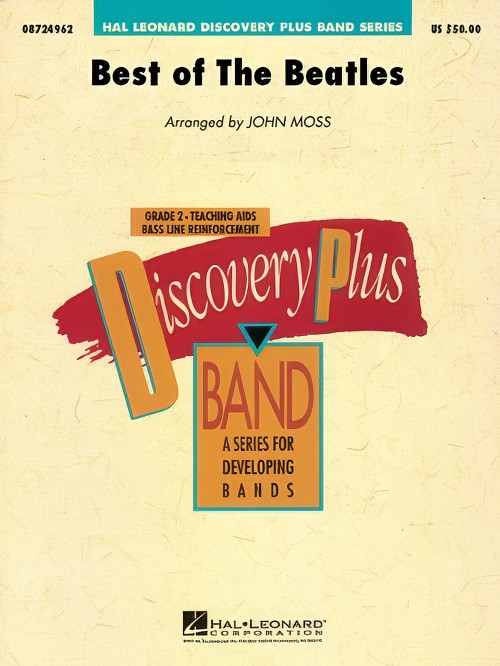 £57.50
£57.50Best of The Beatles (Concert Band - Score and Parts) - Moss, John
The music of John Lennon and Paul McCartney never grows old. John Moss has taken three classics by The Beatles and created a joyful medley for young players. Including Ticket to Ride, Hey Jude and Get Back, this is music that speaks to all generations!Duration: 4:45
Estimated dispatch 7-14 working days
-
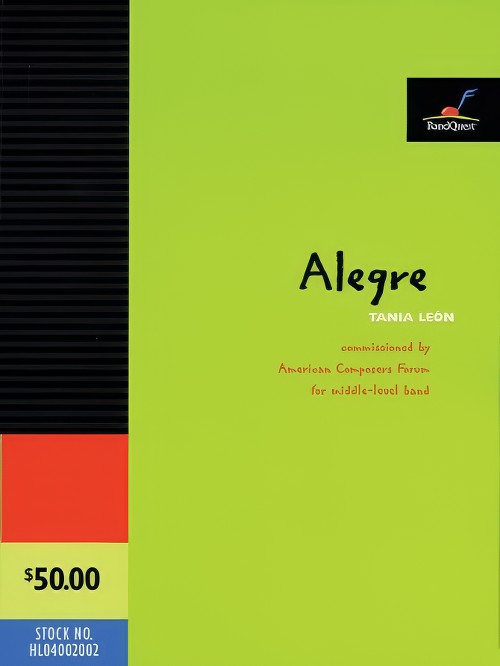 £47.50
£47.50Alegre (Concert Band - Score and Parts) - Leon, Tania
Alegre is a Spanish word meaning joyful. Utilising the style of a Latin groove, the piece is a showcase for rhythmic dexterity. It also demonstrates the inextricable link in Latin American cultures between music and dance. Tania Leon incorporates the stylistic elements of ostinati with off-beat accents and improvisation to create a brilliant piece that excites both mind and body.
Estimated dispatch 7-14 working days
-
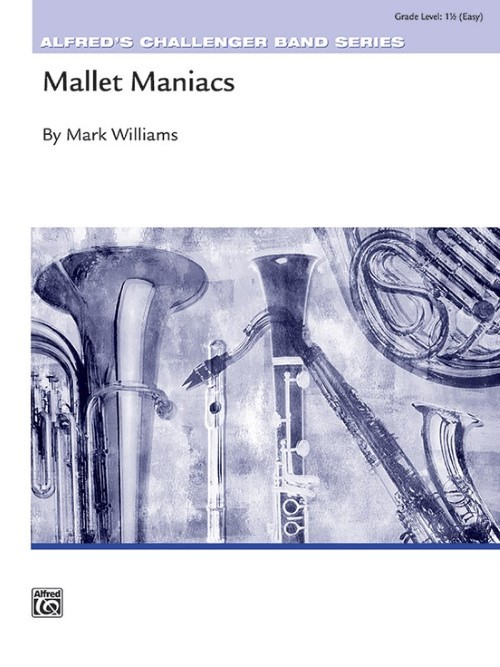 £49.95
£49.95Mallet Maniacs (Mallet Percussion Feature with Concert Band - Score and Parts) - Williams, Mark
Show off your mallet percussionists in this clever section feature. Use as many players as possible on bells, xylophone, vibes and marimba for this joyful tour-de-force. The parts are easy enough that you can even recruit some "non-mallet" percussionists to join in. What a cool way to promote mallet percussion Don't miss this one! Duration: 1.45
Estimated dispatch 7-14 working days
